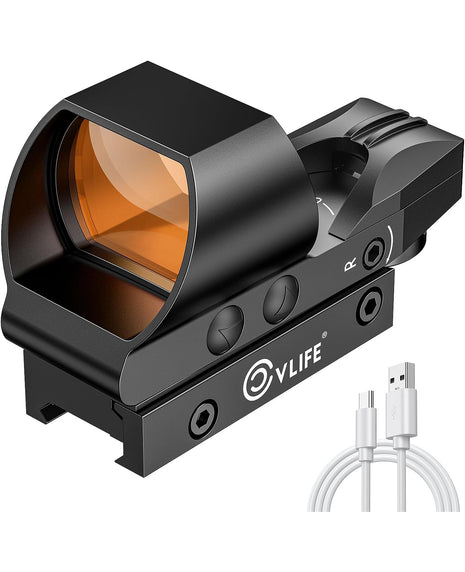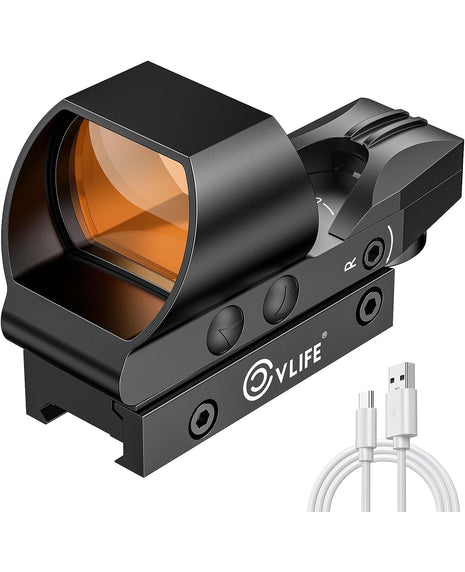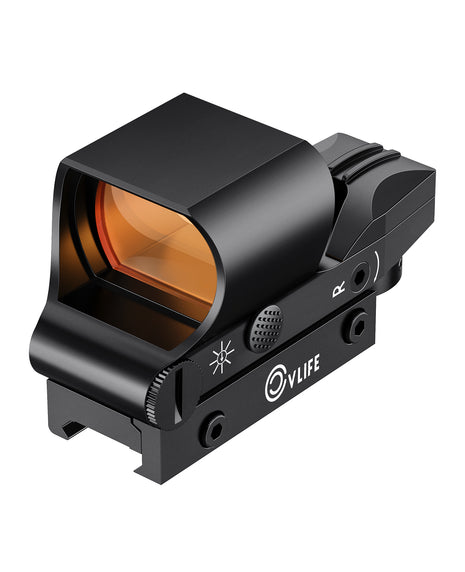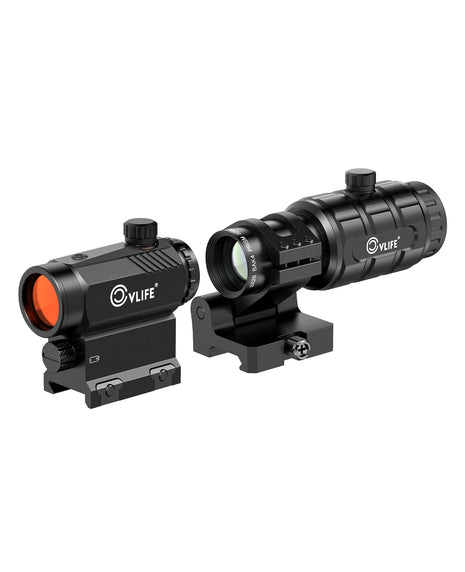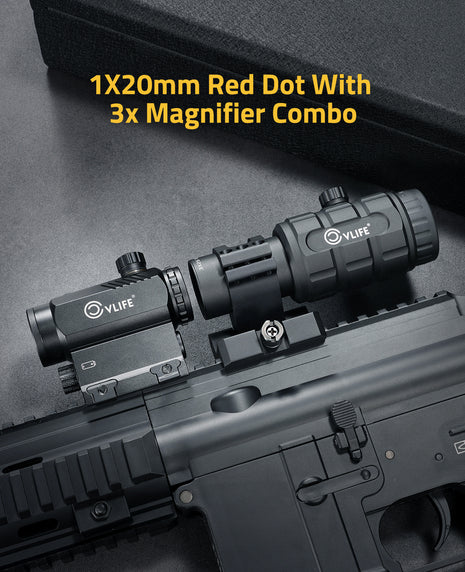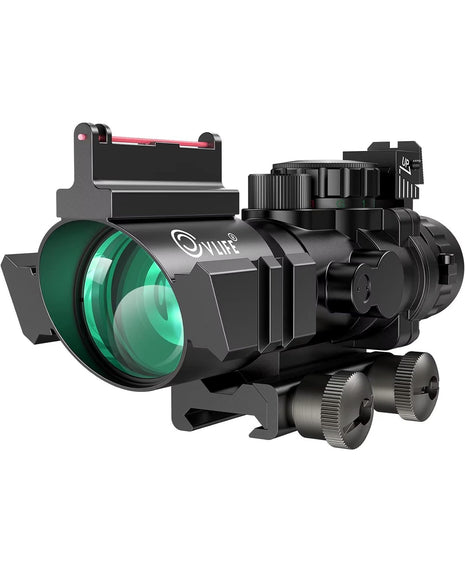7 Common Mounting Mistakes for Shake Awake Optics on AR-15s
- 9 min Lesezeit

Learn the 7 common mistakes when mounting shake awake optics on AR-15s to enhance performance and accuracy.
Shake awake optics—like motion-activated red dots and reflex sights—are a game-changer for AR-15 users. With instant activation and long battery life, they offer both speed and reliability. But even the most advanced optic won’t perform well if it’s mounted incorrectly. If your sight won’t hold zero or randomly turns off, the issue might not be the optic itself—it could be the way it was installed.
1. Using the Wrong Mount or Base
Most AR-15 rifles are equipped with standard Picatinny (MIL-STD-1913) rails, which offer consistent spacing and cross-slot dimensions ideal for securely mounting shake awake optics. However, not all rail systems are created equal. Some budget-friendly or older aftermarket parts—especially handguards or upper receivers—may come with Weaver-style rails or even proprietary designs. While Weaver and Picatinny may look similar, they have key differences in slot width and spacing that can affect optic stability and compatibility.
Using the wrong type of mount on the wrong rail can lead to poor fitment, optic shift under recoil, or even damage to your sight. For example, a Weaver ring might sit too loosely on a Picatinny rail, while a Picatinny-compatible base might not even lock into a Weaver-style slot. If you're unsure, refer to your rifle’s specs or reach out to the rail or mount manufacturer for clarification.
Also, be cautious with ultra-cheap mounts found on auction sites or no-name brands. These often use soft metals that can strip easily or warp under pressure, especially during repeated firing sessions. A poorly machined mount might also fail to hold zero, turning your precision rifle into a guessing game.
In short: always match your optic’s mounting system to your rifle’s rail type, and invest in quality mounts made from durable materials like aircraft-grade aluminum. It's a small upfront cost that protects your optic and ensures dependable performance when it matters most.
2. Not Leveling the Optic
Even a slight cant—when your optic is not perfectly level with your rifle—can cause your point of impact to shift, especially as distances increase. This issue becomes even more critical when using shake awake red dots or reflex sights designed for fast target acquisition. A tilted optic may still "look" fine up close, but at 100 yards or beyond, even a few degrees off can translate to inches of miss.
To avoid this, always take the time to level your optic during installation. The most reliable way is to use a bubble level or a dedicated optic-leveling tool. Start by clamping your rifle securely in a vise or a gun cradle, making sure the upper receiver is level. Then, place a small bubble level across the top rail or flat surface of the receiver. Once the rifle is confirmed level, attach your optic and adjust it until its turret caps—or flat top housing—line up level with the rifle.
Some shooters try to "eyeball" the level, but that’s risky. Human perception isn't precise enough for consistent accuracy, especially when recoil, movement, and environmental conditions are involved. A bubble level adds precision and eliminates guesswork.
Proper leveling ensures your dot or reticle aligns with your bore axis, so every shot tracks true regardless of distance. It's one of the simplest yet most overlooked steps in optic setup—and getting it right can be the difference between ringing steel or missing completely.
3. Overtightening or Undertightening Screws
Always use a quality torque wrench when mounting your optic, and carefully follow the manufacturer’s recommended torque specifications. For most AR-15 mounts, this typically falls within the range of 15 to 25 inch-pounds. Applying the correct torque is crucial — too little, and the mount might loosen during recoil or rough handling, causing your optic to shift and throw off your zero. Too much torque, on the other hand, can strip threads or damage the mounting hardware and even the optic itself. By using a torque wrench and sticking to the specified inch-pound values, you ensure a secure, reliable mounting that maintains consistent performance without risking damage to your rifle or scope.
4. Mounting Too Far Forward or Too Close
When mounting your optic on an AR-15, it’s generally best to position it just forward of the charging handle. This placement provides a natural and comfortable eye relief, allowing you to get a clear sight picture without having to strain or awkwardly adjust your head. This not only helps reduce fatigue during longer shooting sessions but also makes it easier to maintain proper shooting posture, improving your overall experience.
Additionally, mounting the optic in this spot helps preserve your peripheral awareness. This is especially important in fast-paced shooting scenarios like 3-Gun competitions or tactical drills, where you need to quickly engage targets while staying aware of your surroundings. Having the optic slightly forward allows you to acquire targets swiftly without losing environmental awareness or having to move your head excessively. Overall, this positioning offers the ideal balance of speed, comfort, and situational awareness for most AR-15 shooters.
5. Ignoring Threadlocker Use
When securing your optic to the mount, it’s a smart move to use blue (medium strength) Loctite on the mounting screws. This threadlocker helps prevent the screws from gradually loosening due to the repeated recoil of your AR-15, which can cause your optic to shift or lose zero over time. Blue Loctite provides just the right amount of hold—it’s strong enough to keep everything firmly in place during shooting, yet still allows for relatively easy removal when you need to take the optic off for maintenance or adjustments. On the other hand, avoid using red Loctite for this purpose. Red Loctite is a high-strength threadlocker that bonds very tightly and often requires heat or special tools to break free. Using red Loctite could risk damaging the mounting screws or even your optic if you try to remove them later. So, sticking with blue Loctite is the safest and most practical choice to keep your optic securely mounted without causing headaches down the road.
6. Not Testing Battery Contact After Mounting
Getting the torque right and making sure your optic is properly aligned isn’t just about keeping it physically secure—it also affects how well the battery contacts inside the sight work. If the mounting screws are too tight or too loose, or if the optic sits crooked on the rail, the battery terminals might not make consistent contact. This can cause your shake awake optic to fail to power on when you need it most. To avoid surprises out in the field, after mounting your optic, give your rifle a gentle shake to confirm the sight activates every time without fail. Also, before you mount your optic, take a moment to clean the battery terminals and contact points with a soft cloth or brush. Removing any dust, oils, or corrosion ensures a strong electrical connection, helping your optic wake up instantly when you move. These simple steps can save you frustration and keep your gear ready for whatever hunt or range session lies ahead.
7. Skipping Range Confirmation After Mounting
After you’ve securely mounted your optic on your AR-15, the next crucial step is to zero it properly. Zeroing means adjusting your optic so that the point of impact matches your point of aim at a specific distance. Don’t just trust the mount and screws—take the time to fire a few test rounds at the range. This will help you confirm that your optic is aligned correctly and that your shots are landing where you expect them to. It’s worth spending this extra time upfront because a properly zeroed optic makes all the difference when you’re out hunting or in a shooting competition.
Once you’ve zeroed your optic and verified your shots, don’t forget to re-check the tightness of all mounting screws after your first range session. The initial recoil can sometimes cause screws to loosen slightly, especially if they weren’t torqued to spec. Ensuring everything remains tight and secure means your optic will hold its zero over time and stay ready for action when you need it most. Taking these simple but important steps helps keep your shooting consistent and your gear performing at its best in the field.
Final Thoughts
Mounting your shake awake optic correctly is just as important as picking the right model. For AR-15 users, avoiding these common mistakes can mean the difference between frustration and flawless function. Whether you're at the range or in the field, smart installation ensures your gear performs at its best.
Explore the full CVLIFE collection of red dots and reflex sights for AR-15s by visiting our Red Dot Optics page.
Frequently Asked Questions (FAQ)
What is a shake awake optic?
Shake awake optics are red dots or reflex sights that automatically power on when they detect motion. This feature conserves battery and ensures instant readiness.
How do I activate the shake awake feature?
Most optics come with the feature pre-enabled. Simply leave the sight alone for a few minutes, then move your rifle—the red dot should appear without pressing any buttons.
Will shake awake work with a magnifier?
Yes. Shake awake red dots work well in tandem with flip-to-side magnifiers. Just make sure you mount both optics at the correct height and eye relief.
How often should I re-tighten the optic after mounting?
Check screw tightness after your first range session. After that, inspect monthly or after any rough use. Avoid over-tightening.
Can I use these optics for hunting?
Absolutely. Shake awake optics are great for quick target acquisition in close-range hunting scenarios, especially hogs, coyotes, or whitetail in thick brush.
Tags
Blogs & Neuigkeiten
-

, Von C V Night Vision & Thermal Scopes: Hunting’s New Frontier
-

, Von C V How to Choose the Right Reticle & Magnification (2025 Guide)
-
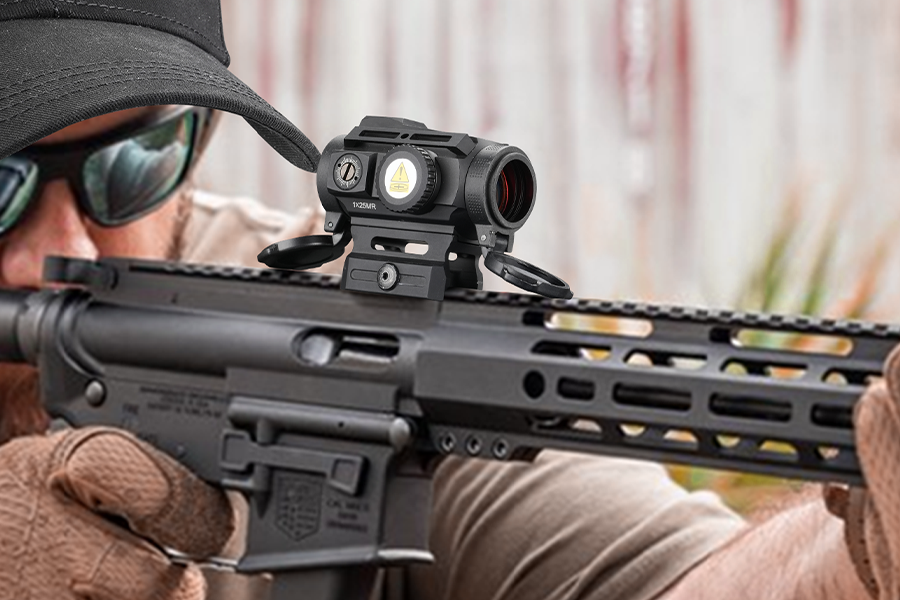
, Von C V Do Red Dot Sights Really Work for Hunting in 2025?
-

, Von C V More Land, More Game: Expanded Public Hunting Opportunities in 2025

